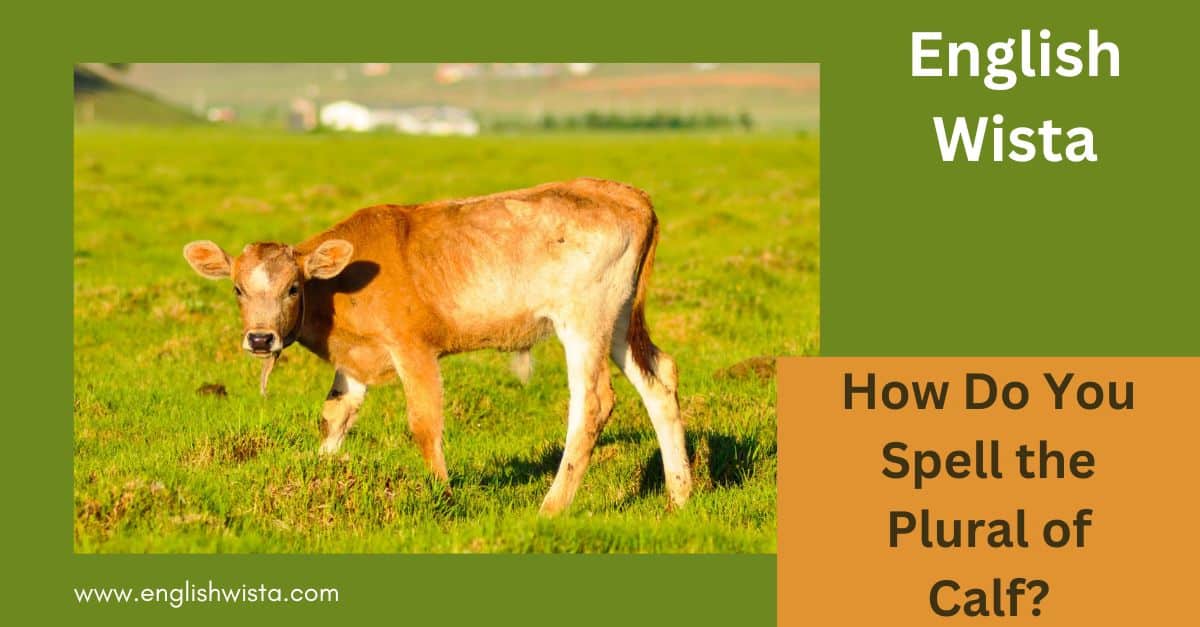The plural of calf might seem simple, but it often trips people up. Is it calves, calfs, or something entirely different? If you’ve ever second-guessed yourself while writing or speaking, you’re not alone! English rules can be tricky, and this one has its own quirks that might surprise you.
You’re about to uncover not just the correct plural of calf but also why it follows the pattern it does. Whether you’re talking about baby cows or the back of your legs, we’ll break it down in a way that’s easy to remember. Ready? Let’s dive in!
What Is the Plural of Calf?
The plural of calf is calves. Notice the change? Instead of just adding an -s at the end (like we do with many other words), the f changes to a v, and then we add -es.
Here’s what it looks like:
- Singular: calf
- Plural: calves
Example Sentences:
- The farmer counted ten calves in the field this morning.
- A mother whale cares deeply for her calves in the ocean.
Why Does the F Change to a V?
This spelling change is rooted in the history of English and how words have evolved over time. Many words in English that end in f (or fe) follow this same pattern when they become plural.
Here are a few examples:
- Wolf → Wolves
- Leaf → Leaves
- Knife → Knives
But why, exactly, does this happen? The change from f to v makes the word easier to pronounce when spoken. Language often adapts to make communication smoother, and this is one of those cases!
Are There Exceptions to This Rule?
Yes, there are exceptions! Not every word ending in f or fe changes to v in the plural form. Some words just add an -s, like this:
- Cliff → Cliffs
- Roof → Roofs
- Chief → Chiefs
So how do you know which rule to follow? Unfortunately, there’s no easy shortcut—you just have to memorize them. But don’t worry! Common words like calves will become second nature the more you use them.
Is Calves Singular or Plural?
Good question! The word calves is plural. The singular form is calf.
To keep it simple:
- Use calf when you’re talking about one (e.g., “That’s a cute little calf!”).
- Use calves when you’re talking about more than one (e.g., “The calves are playing in the meadow.”).
Fun Fact: What Does Calf Mean?
The word calf has two common meanings:
- A young animal: This usually refers to young cows, but it can also mean the young of other mammals like whales, elephants, or deer.
- The back of your lower leg: That’s right! The muscle in the back of your leg is also called a calf.
The plural is still calves, no matter which meaning you’re using.
Example Sentences:
- The soccer player stretched her calves before the game. (leg muscle)
- The calves followed their mother across the field. (young animals)
Real-Life Examples of Calf in Action
Here are a few more examples to help you see the word calves in everyday use:
- Farm Context:
- Singular: The baby cow, or calf, is only a week old.
- Plural: The farmer introduced the new calves to the herd.
- Wildlife Context:
- Singular: A humpback whale swims with her calf.
- Plural: The pod included several mother whales with their calves.
- Fitness Context:
- Singular: I injured my left calf while running.
- Plural: Strengthening your calves can improve your balance and posture.
Where Did the Word Calf Come From?
Here’s a bit of linguistic trivia for you! The word calf comes from Old English cealf, which dates back over 1,000 years. Over time, it evolved into the word we use today. Interestingly, other Germanic languages have similar words—like kalb in German or kalf in Dutch—that also refer to young animals.
How to Remember the Plural of Calf
Struggling to remember that calf becomes calves? Here are a couple of tips:
- Think of other similar words: Pair calf → calves with words like wolf → wolves or leaf → leaves.
- Create a mental picture: Imagine a baby cow (calf) standing next to a group of them (calves). Visualizing the difference can help it stick!
Bonus: Collective Nouns for Calves
Did you know there are special terms for groups of calves? Here are a couple to add to your vocabulary:
- Herd: A group of calves or adult cows.
- Pod: A group of whale calves and their mothers.
These words are handy if you’re writing or talking about animals in a group!
Quick Recap
Let’s summarize what we’ve learned:
- The plural of calf is calves.
- The f changes to a v for smoother pronunciation.
- Not all words ending in f follow this rule (e.g., cliffs and roofs).
- Calf has two meanings: a young animal and a part of your leg.
- Practice and context will help you remember these rules!
Final Thoughts
Now you know how to spell the plural of calf, it’s calves! Language quirks like this can be a little confusing at first, but with practice, they’ll become second nature.
Whether you’re talking about adorable baby cows, strong leg muscles, or even curious grammar rules, this small word has a lot to offer. Next time you see a group of calves (or feel your own calves after a good workout!), you’ll know exactly how to describe them.
Happy learning, and keep exploring the wonders of English!



